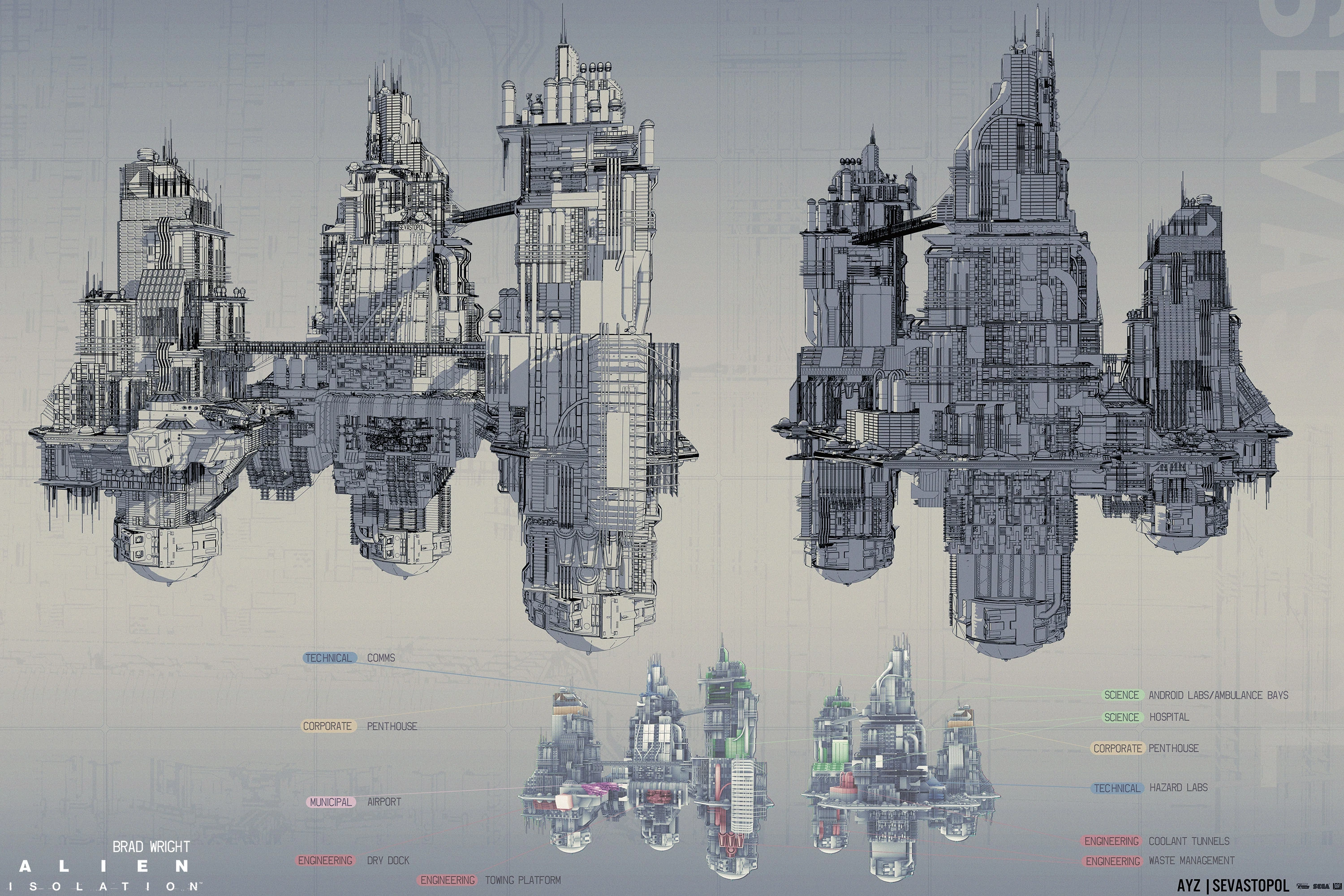Are space stations like Sevastopol (Alien Isolation) realistic?
Like this:

If we were to build stations in deep space meant exclusively for human habitation, would chunky floating cities like this be a feasible design or would we be more likely to create something like an O'Neill cylinder instead?
This post was sourced from https://worldbuilding.stackexchange.com/q/50622. It is licensed under CC BY-SA 3.0.
2 answers
The major problem with building a space station like a city is that you can't really make it anything like Earth:
- O'Neill cylinders are big enough that they can have their own weather systems. The only way you can do this in a city-like space station is to create a giant dome encasing the entire thing, which seems to be something of a waste and makes it hard to exit the bloody thing on the top.
- O'Neill cylinders rotate, and so at a radius
- It's easier to grow plants in an O'Neill cylinder unless you want to enlarge the dome over the city to include fields; there's plenty of room. Assuming you can't have fields in the domed city (which would be in areas without gravity, I think, and so would have weird conditions), you need to use hydroponics or turn skyscrapers into farms - again, without artificial gravity, since you'd have to have the towers rotating if you wanted uniform gravity. This could have negative effects on plants (I think the jury is out on that one). Animals might also behave differently, as bone density would be affected, but hey, perhaps we can just 3D print food. Tofurkey, anyone?
- And finally, yes, people like cities, but I think long-term inhabitants would want to remember the natural beauty of Earth, walking in meadows and hiking along trails (and maybe swimming in lakes). Can your floating cities do that.
For these reasons (and likely more), things will be much more convenient (gravity, weather, plants and animals, etc.) in an O'Neill cylinder that in a floating cylinder.
0 comment threads
The benifit of the O'Neill cylinder is that you can get spin gravity by rotating it.
The Alien universe has artificial gravity, so space stations can be more like the one in the picture without having to float everywhere.
If your universe has artificial gravity then you can make the station look like anything you want. If not then you either have to spin or float.
The rule that form follows function is very true, and the function of the station will determine its shape.
Gravity? Ore processing? Farming? Residential areas?
Each of these will shape the final product.





















0 comment threads